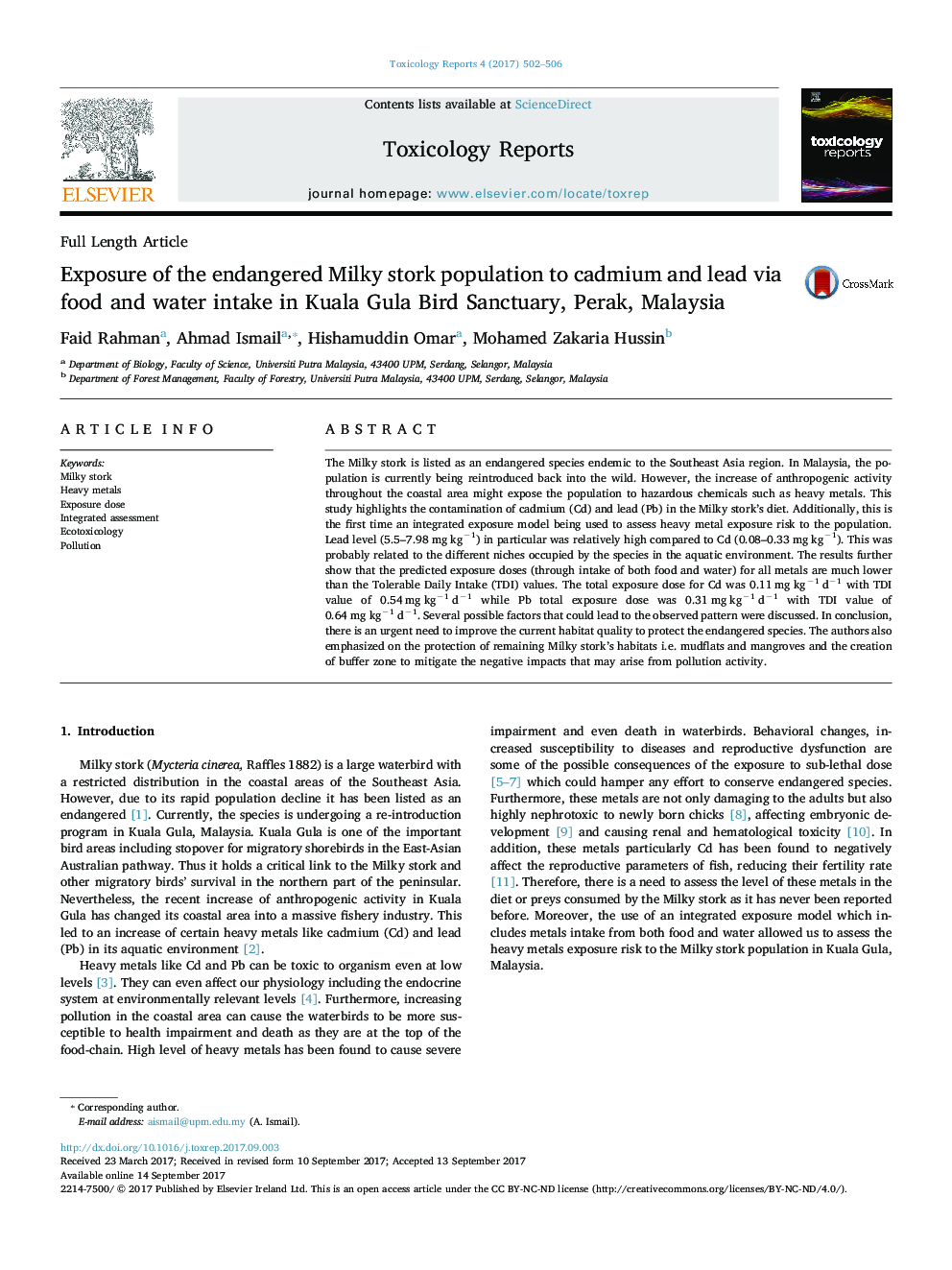| کد مقاله | کد نشریه | سال انتشار | مقاله انگلیسی | نسخه تمام متن |
|---|---|---|---|---|
| 5558697 | 1561190 | 2017 | 5 صفحه PDF | دانلود رایگان |

- Evaluation of cadmium and lead exposures to the endangered Milky stork population was conducted.
- Lead level was found to be much higher compared to cadmium in the Milky stork's diet.
- At least 90% of the total metal exposure to the population came from diet.
- The total exposure doses for Cd and Pb were lower than the Tolerable Daily Intake, but the increasing pollution pattern should cause a concern.
- This issue requires urgent action to protect the population due to the endangered status of the population.
The Milky stork is listed as an endangered species endemic to the Southeast Asia region. In Malaysia, the population is currently being reintroduced back into the wild. However, the increase of anthropogenic activity throughout the coastal area might expose the population to hazardous chemicals such as heavy metals. This study highlights the contamination of cadmium (Cd) and lead (Pb) in the Milky stork's diet. Additionally, this is the first time an integrated exposure model being used to assess heavy metal exposure risk to the population. Lead level (5.5-7.98 mg kgâ1) in particular was relatively high compared to Cd (0.08-0.33 mg kgâ1). This was probably related to the different niches occupied by the species in the aquatic environment. The results further show that the predicted exposure doses (through intake of both food and water) for all metals are much lower than the Tolerable Daily Intake (TDI) values. The total exposure dose for Cd was 0.11 mg kgâ1 dâ1 with TDI value of 0.54 mg kgâ1 dâ1 while Pb total exposure dose was 0.31 mg kgâ1 dâ1 with TDI value of 0.64 mg kgâ1 dâ1. Several possible factors that could lead to the observed pattern were discussed. In conclusion, there is an urgent need to improve the current habitat quality to protect the endangered species. The authors also emphasized on the protection of remaining Milky stork's habitats i.e. mudflats and mangroves and the creation of buffer zone to mitigate the negative impacts that may arise from pollution activity.
92
Journal: Toxicology Reports - Volume 4, 2017, Pages 502-506